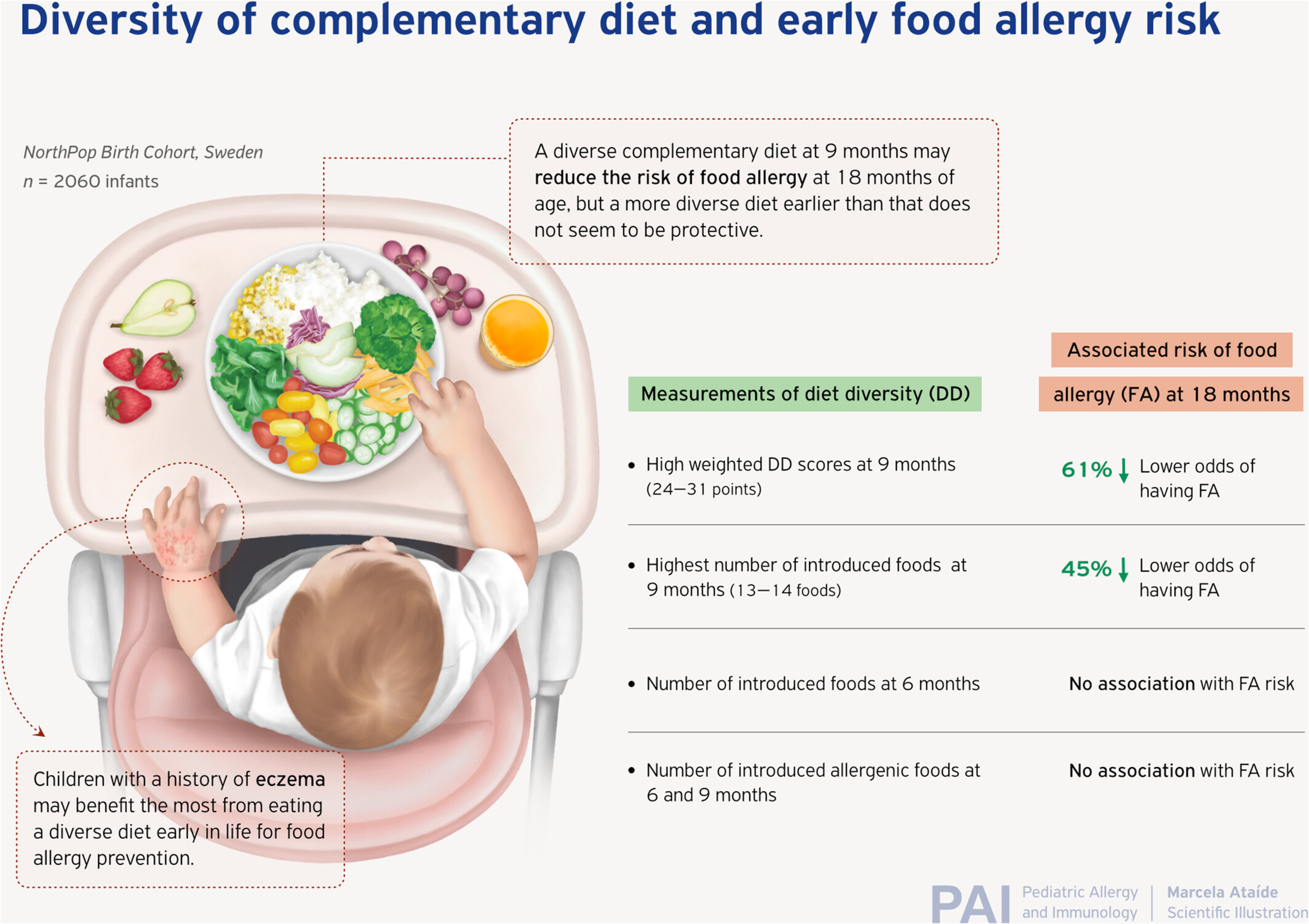In one of the latest studies from NorthPop, Stina Bodén and colleagues investigated whether the introduction of a varied diet early in life can help reduce the risk of food allergies.
Stina explained more about what they investigated, how the study was conducted, and the results:
Our study shows that regular intake and a wide variety of foods during infancy can reduce the risk of food allergies. The results support the theory that early exposure to different foods contributes to the development of oral tolerance, meaning that the immune system in the gastrointestinal tract learns to tolerate the food.
Our study shows that a wide variety and regular intake were particularly important for children with eczema. This is interesting because previous studies have shown that children with eczema have an increased risk of developing food allergies.
There are several good reasons to promote dietary diversity during the child’s first year of life, says Stina, not least in the form of a variety of vegetables, fruits, and legumes, and to encourage early introduction of different types of foods as part of healthy eating habits. Our results are in line with current Swedish guidelines to start with taste portions around six months, or earlier if the child shows interest. Let the child gradually get used to the taste and texture before increasing the amounts and try to avoid times when the child is full or too tired. Doing weekly shopping and planning meals in advance is usually a success factor for a varied diet, which is beneficial for the whole family.
Food allergies in children are a growing health problem, and previous research has shown that early introduction of different foods can reduce the risk of food allergies by promoting the immune system’s tolerance development. Our study is the first to investigate the importance of how often infants eat different types of food and its direct connection to food allergies.
The study included 2060 children from the NorthPop cohort for whom parents provided information about dietary intake during infancy as well as whether there was a medically diagnosed food allergy at around 18 months of age. Dietary diversity was measured by calculating the number of foods the child had started eating and how often the child ate different foods at 9 months of age.
At 18 months of age, it was reported that 100 children (4.9%) had a medically diagnosed food allergy. Eating many different types of healthy foods often at 9 months of age was clearly linked to a lower incidence of food allergies at 18 months of age, compared to children who had a less varied diet and a less regular intake. Children who had introduced more foods at 9 months of age also had a lower risk of food allergies at 18 months of age compared to those who introduced fewer foods, regardless of how often they ate these foods.
The potentially protective effect of dietary variety during infancy was particularly pronounced among children with eczema, which is an interesting result that strengthens the theory of so-called dual allergen exposure. This theory suggests that early oral exposure to allergens can protect against developing food allergies, while early skin exposure, especially in the absence of oral exposure, can increase the risk of developing food allergies.
Further research is needed to determine how early dietary intake affects allergy risk, but this study provides valuable knowledge that can be used to develop guidelines for infant nutrition.
The article “Diversity of complementary diet and early food allergy risk” was published in the journal Pediatric Allergy and Immunology in January 2025 and was also selected for editorial commentary. It is available here: https://onlinelibrary.wiley.com/doi/10.1111/pai.70042
About the scientific publication: Bodén S, Lindam A, Venter C, Ulfsdotter RL, Domellöf M, West CE. Diversity of complementary diet and early food allergy risk. Pediatr Allergy Immunol. 2025 Jan;36(1):e70035. doi: 10.1111/pai.70035. PMID: 39868464; PMCID: PMC11771557. https://pubmed.ncbi.nlm.nih.gov/39868464/

Foto: Umeå University
